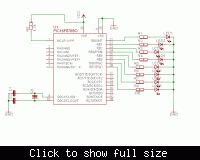sri lakshmi
Newbie level 6
how to test a microcontroller
I have written a simple led program which makes portb highand leds glow.i am able to program it.but there is no output at portb. what does this mean is the pic working or not.
I have written a simple led program which makes portb highand leds glow.i am able to program it.but there is no output at portb. what does this mean is the pic working or not.
